The Mud has to come out
To expand our garden and have the water we need I knew I had to find a way to get the mud out. Talking with my neighbours they suggested I rent a gas powered trash pump, stir up the sediment with a long pole, then pump the thick slurry of mud and water out onto the field. When the mud dried it could then be shovelled up and carted away.
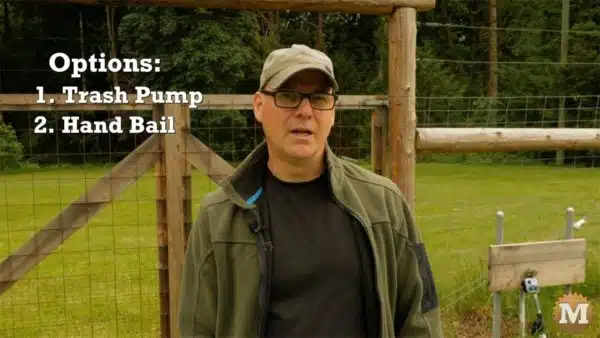
Others had suggested that you need to get down there on a rope with buckets and bail the sediment out by hand. I’ve taken some confined space awareness training so I felt this was not a good idea. Not for me anyways.
The trash pump sounded like it might work but I was worried it wouldn’t have the suction needed if the deeper layers of sediment had compressed into sticky, heavy clay.
What’s the Source of the Well Sediment?
There’s a small stream beside the well that has, over the years, redirected itself to run right up against the concrete casing rings.
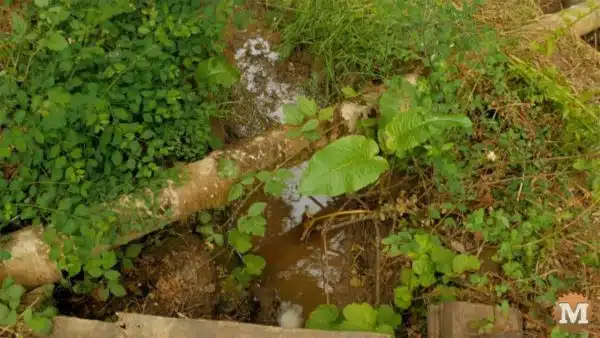
I suspected that it may have overtopped the casings during a heavy storm and been the source of most of the well sediment.
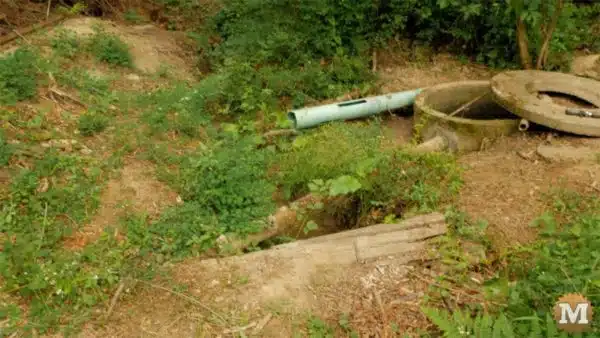
I redirected the steam away from the well last summer in case that was adding to the silt up.
Well Repairs
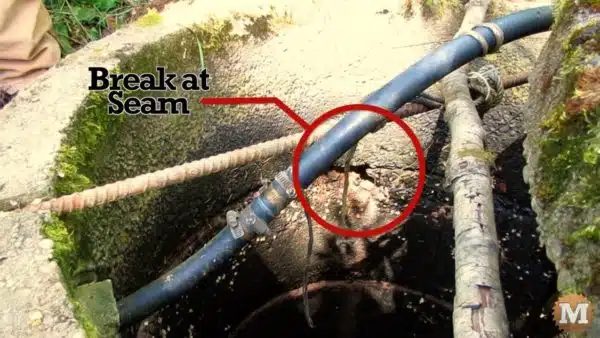
I found muddy water leaking around the seam of the first and second ring and a trail of mud running down the inside. I dug a hole on the outside to investigate. Sure enough there was a two inch diameter hole in the side of the well.
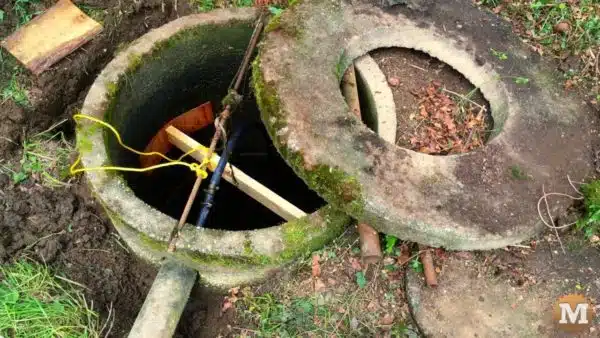
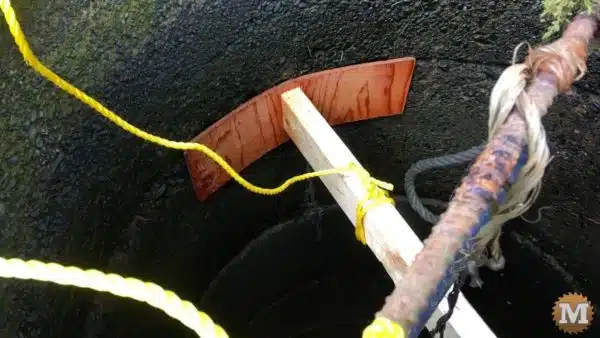
I braced a thin piece of flexible plywood with a two by four on the inside against the hole.
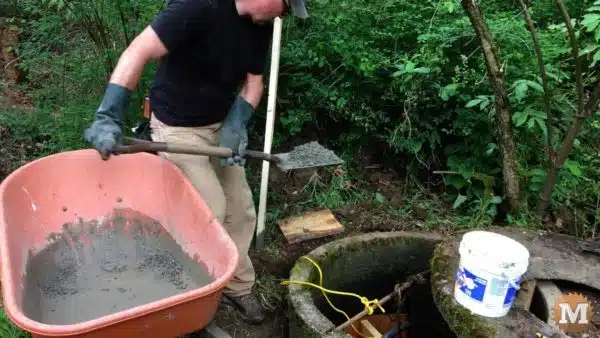
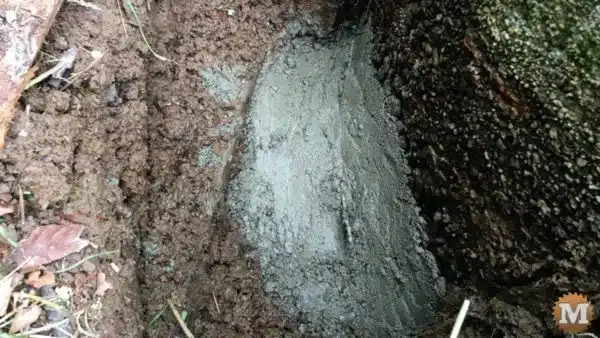
Then mixed up a bag of cement and poured it against the outside wall, pushing the wet cement into the hole to form a plug.
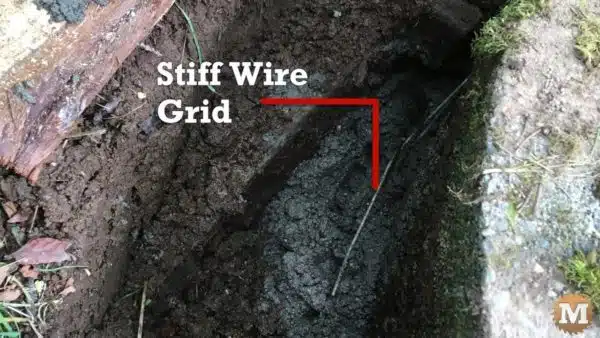
For extra strength, I added a small section of wire reinforcing grid to the cement plug.
(Disclaimer: As an Amazon Associate I earn from qualifying purchases. Thank you for helping to support my content this way. )
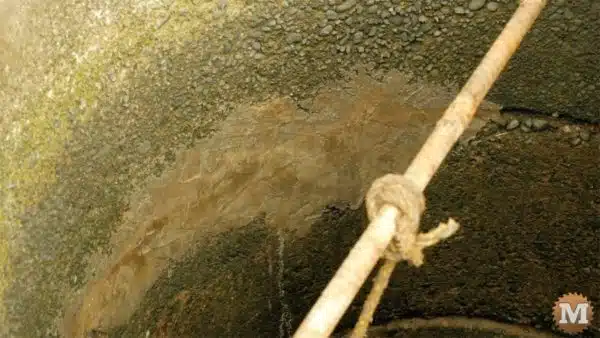
After a few days I removed the plywood then patched up the inside with some hydraulic cement mortar. This is super fast setting cement, designed to plug concrete water leaks and it worked very well!
There’s a four inch diameter cement pipe that runs just underground from the pump house, over the stream, and through the wall of the well. This pipe protects the one and a quarter inch black plastic water line.
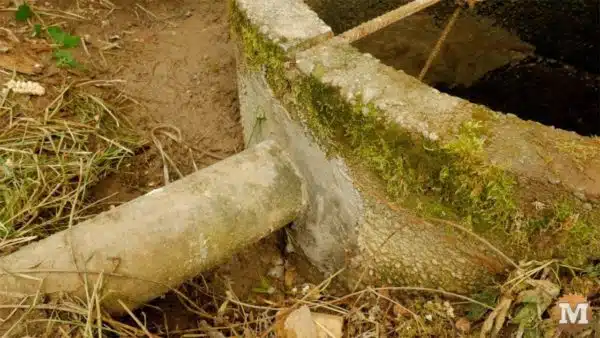
Around this pipe there was a big gap that mud could get in, so I also patched that with hydraulic cement too.
